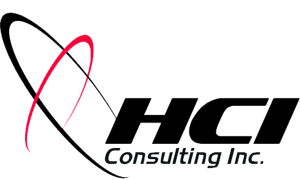Every organization should incorporate risk management into all aspects of human resources planning by identifying the sources and levels of risk and coordinating the required resources to make an effort towards minimization. This is especially important within situations where the risk involves compliance with legislation requiring employers to take responsibility for implementation, achievement, and maintenance as part of the self-managed process.
The risk of not complying with Ontario’s Pay Equity Act is often overlooked by employers. The price of non-compliance, or of simply ignoring the responsibility to complete a prescribed analysis to determine if pay equity-related issues exist, can be significant. Not only does the law fine for non-compliance, but there is also a potential retroactive adjustment or payment requirement (including interest payments) for the year(s) that the employer failed to comply beyond their original pay equity plan posting date (http://www.payequity.gov.on.ca/en/resources/pe_guidelines/ge_3.php).
The most recent Statistics Canada data shows that the gender wage gap in Ontario is 28%. In 1987, when the Pay Equity Act was passed, the gender wage gap was 36%. According to the Pay Equity Office (PEO), “as much as a quarter or a third of this gap in salaries between men and women can be attributed to discrimination in the workplace.”
The fact that the wage gap has only been closed slightly in the last 25 years, and – according to the PEO statisticians – since it is estimated that as much as 10-15% of the gender wage gap is due to discrimination, employers can expect a continued effort by the PEO to increase awareness of pay equity. In its 2010-2011 annual report, the PEO stated that it has been taking a number of steps to ensure that employers and employees alike are aware of this legislation.
How does the PEO plan to accomplish this goal of legislation awareness, and how will the PEO make more employers accountable for providing evidence of compliance and maintenance? The PEO launched its Wage Gap Program in January of 2011, which is intended to “solicit information about current compensation levels for the non-unionized employees of private sector organizations across Ontario to determine if gender wage gaps persist in workplaces.” This program will eventually reach all private sector employers in Ontario.
The PEO’s Wage Gap Program’s attempts to bring awareness through education are showing signs of success. In its annual report, the PEO noted there was “an overall increase in the number of complaint files,” with 162 new complaint files being opened in 2010/2011 (http://www.payequity.gov.on.ca/en/training/index.php).
So what can your organization do to mitigate pay equity risk? First, understand whether your organization is covered by the Pay Equity Act. If yes, ask whether or not anything has been done in the past to develop and maintain a pay equity plan. If development or maintenance has not occurred, take advantage of this time and flexibility to proactively implement a pay equity plan for your organization to prevent a future reactionary response to the PEO’s Wage Gap Program or a formal complaint. Given the PEO’s continued efforts to increase awareness and the potential costs of being found non-compliant, the risks associated with the “we’ll deal with it when it happens” attitude are too high. Pay equity should not be ignored.
If you’re required to comply with the Act but aren’t sure what needs to be done, you may want to consult the Pay Equity Office’s website (www.payequity.gov.on.ca).
Mark Whittrick is a Senior Consultant with Human Capital Investment Consulting Inc. (HCI), a human resources consulting firm specializing in the development of pay equity plans that meet the requirements of Ontario’s Pay Equity Act for both unionized and non-union workforces. For more information, visit www.hciconsulting.ca, www.payequity.ca, or contact Mark directly at mark.whittrick@hciconsulting.ca.
